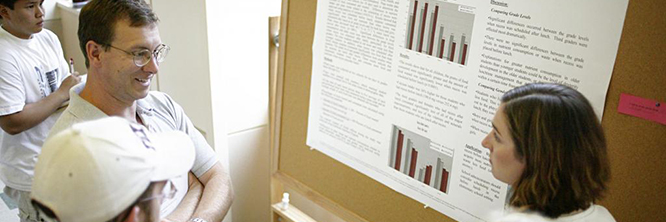Preliminary Analysis of Fauna from 1950s Excavations at a Coastal Site in Willapa Bay, Washington
Document Type
Poster
Event Website
https://source2022.sched.com/
Start Date
16-5-2022
End Date
16-5-2022
Keywords
Archaeology, Fauna, Washington Coast
Abstract
About 1957, former CWU professor James Alexander excavated at a coastal site in Willapa Bay he labeled 45PC21, which may actually be 45PC7, the Martin Site. If it is the Martin site, later work by Shaw in 1974 yielded radiocarbon dates 1400-1900 years old for this site thought to be ancestral Chinookan. Alexander’s excavations consisted of two 3 x 5-foot units dug 7 to 9 feet deep, and probably not screened. No detailed analysis was performed, but Alexander’s 1957 report notes recovery of 24 stone tools, some 240 bones, shell, fire-cracked rock, charcoal, and wood. In 2022, I analyzed the 137 extant bone specimens from Test Pit 2. These include a wide variety of animals, including sea mammals (harbor seal, sea otter, porpoise or dolphin, larger whale), terrestrial mammals (elk, deer), and bird. Nearly all the remains are broken, and most could be identified only to general animal size, dominated by Size Class 6 (about the size of an elk and sea lion or 200-1500 lbs.). Fourteen bones have evidence of butchering in the form of cutmarks, three show impact notches, and three were further modified into artifacts. The artifacts are all uncertain function, and some are the remains of artifact manufacture rather than the finished objects themselves. The most interesting are two distal cannonbones (one elk and one deer) sawed off using the groove-and-snap technique at the lower shaft, presumably to create thick bone tubes from the shafts (not present).
Recommended Citation
Menzia, Kevin, "Preliminary Analysis of Fauna from 1950s Excavations at a Coastal Site in Willapa Bay, Washington" (2022). Symposium Of University Research and Creative Expression (SOURCE). 77.
https://digitalcommons.cwu.edu/source/2022/COTS/77
Department/Program
Anthropology & Museum Studies
Additional Mentoring Department
Anthropology & Museum Studies
Poster
Preliminary Analysis of Fauna from 1950s Excavations at a Coastal Site in Willapa Bay, Washington
About 1957, former CWU professor James Alexander excavated at a coastal site in Willapa Bay he labeled 45PC21, which may actually be 45PC7, the Martin Site. If it is the Martin site, later work by Shaw in 1974 yielded radiocarbon dates 1400-1900 years old for this site thought to be ancestral Chinookan. Alexander’s excavations consisted of two 3 x 5-foot units dug 7 to 9 feet deep, and probably not screened. No detailed analysis was performed, but Alexander’s 1957 report notes recovery of 24 stone tools, some 240 bones, shell, fire-cracked rock, charcoal, and wood. In 2022, I analyzed the 137 extant bone specimens from Test Pit 2. These include a wide variety of animals, including sea mammals (harbor seal, sea otter, porpoise or dolphin, larger whale), terrestrial mammals (elk, deer), and bird. Nearly all the remains are broken, and most could be identified only to general animal size, dominated by Size Class 6 (about the size of an elk and sea lion or 200-1500 lbs.). Fourteen bones have evidence of butchering in the form of cutmarks, three show impact notches, and three were further modified into artifacts. The artifacts are all uncertain function, and some are the remains of artifact manufacture rather than the finished objects themselves. The most interesting are two distal cannonbones (one elk and one deer) sawed off using the groove-and-snap technique at the lower shaft, presumably to create thick bone tubes from the shafts (not present).
https://digitalcommons.cwu.edu/source/2022/COTS/77

Faculty Mentor(s)
Patrick Lubinski